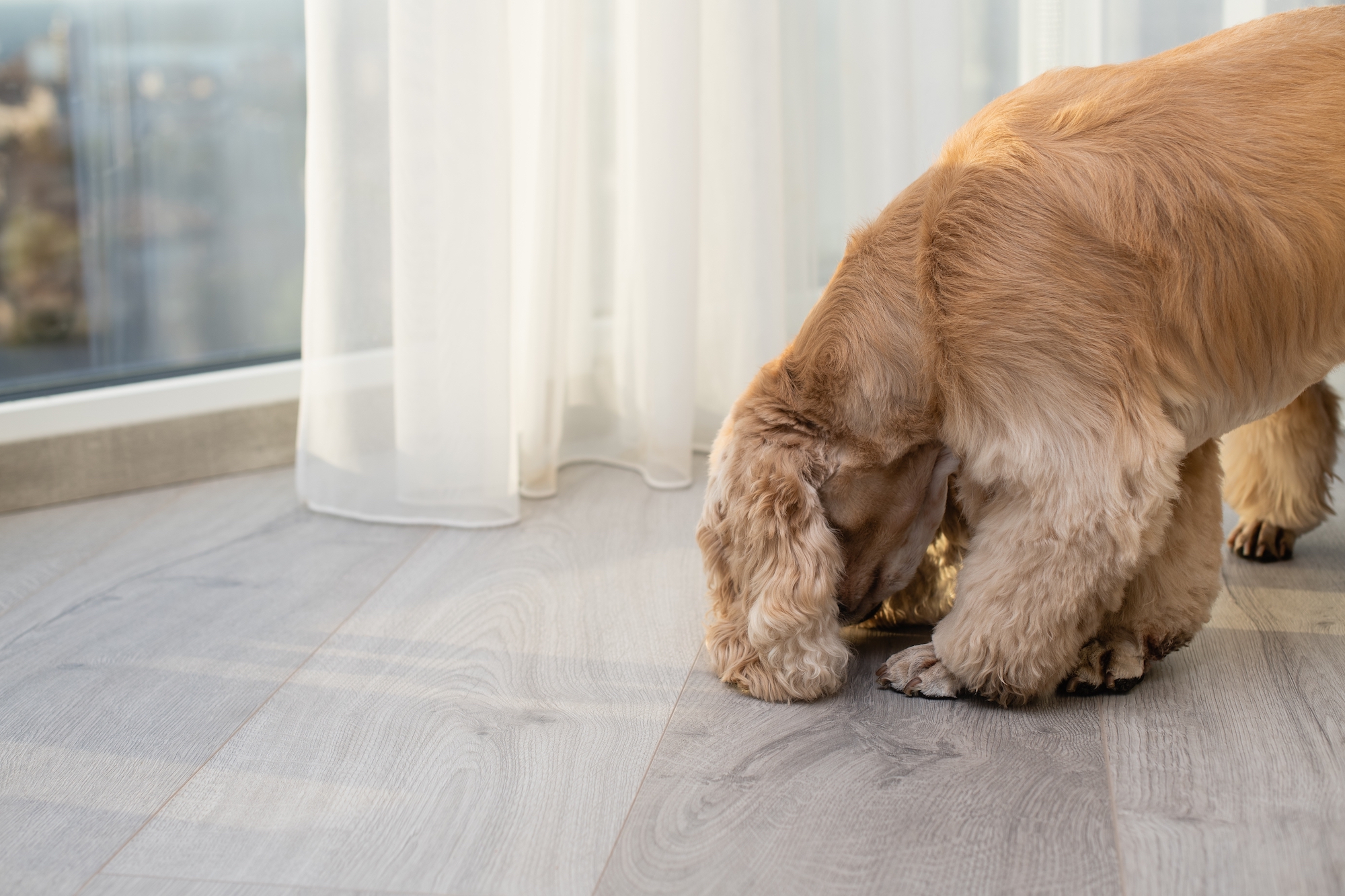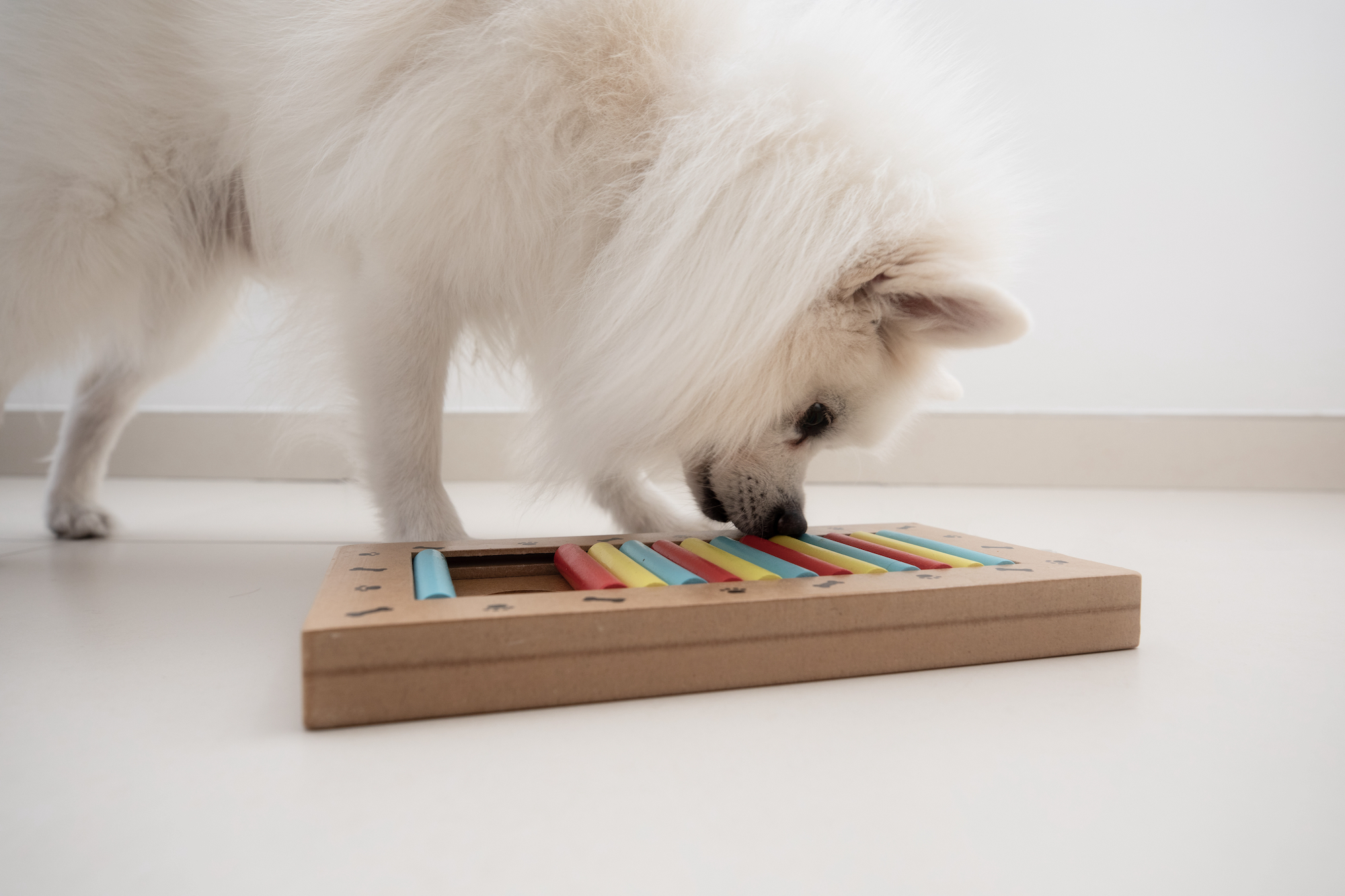Blind dogs can enjoy happy, full lives—especially if their humans take steps to help them make the most of their world. Here are some tips for anyone who’s adopted a blind dog, or whose dog has lost their vision.
Signs of vision loss in a dog
If your dog is going blind, you may notice that they start bumping into things, or that they seem confused. You may not notice this until your dog’s vision loss is very significant, or you’re in an unfamiliar environment, as dogs can use their other senses and memory to compensate for difficulty seeing.
Other signs of vision problems in dogs can include squinting or an increase in sleeping. If you notice anything that seems to be impacting your dog’s vision, visit a veterinarian as soon as you can. Eye problems can be caused by medical conditions that require treatment. In some cases, that treatment can save their vision—or even their lives.
Causes of blindness in dogs
Some dogs are born blind, and many lose their vision as they age or because of diseases. Among the most common causes of blindness in dogs are:
- Glaucoma
- Cataracts
- Progressive retinal atrophy
- Sudden acquired retinal degeneration syndrome
Keep your blind dog safe and happy at home
Denise Herman, founder and head trainer at Empire of the Dog in New York City, has cared for a blind dog herself. She told us that it’s important to keep a dog’s environment safe not only so that they don’t get hurt, but also for the psychological benefits.
“When they run into something,” she explains, “that’s going to affect their confidence about movement—and so one of the things we want to do is think about ways we can protect that confidence and give them ways to move safely.”
One way to do that is to maintain a blind dog’s home environment with their needs in mind. Dogs love to keep up a routine, and may adjust their behavior based on where they remember various objects being in your home—“the same way I could put you in a room that you’re familiar with and turn off the lights, and you would have an approximation of where things are,” as Herman explains. So it’ll go a long way if you keep furniture and other large objects in your home in consistent places.
If you move to a new home or replace or rearrange your furniture, do your dog a favor and gently lead them around. “You can teach them how to navigate a space that’s new, or even if it’s changed a little,” Herman says, “by using treats on a path.”
Another way that Herman suggests making your home easier for a blind dog to navigate is by mixing up the textures under their paws—laying yoga mats or carpets on the floor in front of walls or objects they might bump into. Like ballplayers who slow down before crashing into the outfield wall because they feel the warning track under their cleats, dogs can use these signals to move around their world more easily and safely.
It’s always good to talk to your dog, but announcing your presence when you enter a room or plan to touch your dog is particularly vital when they can’t see you coming. Tell them “hello” and “goodbye,” or ask if they want belly rubs (or whatever affection they may enjoy).
Training a blind dog
Dogs’ sight is very useful, but their smell and hearing are more acute. Combine these two with dogs’ sense of touch, and you have a lot of ways to train a dog who can’t see.
Herman emphasizes the importance of using sounds in training a blind dog. For a dog who hasn’t been trained at all yet, she suggests starting with the basics.
“I would teach them their name,” she says, suggesting saying their name and giving a treat repeatedly, slowly increasing the distance so they’ll come to you when called. After this, she says, she would add “a sound that is like the ‘find me’ sound— like ‘boop boop boop boop boop!’ or something like that.” She says these repeatable sounds are great for blind dogs, who will use the sound of your voice to judge when they’re getting closer to or further from you.
As you expand your repertoire of commands for a blind dog, Herman recommends keeping the cues as distinct from one another as possible. “Sit” and “stay” might sound similar to some dogs, she explains, and without any visual information—like an added hand signal—it could be harder to tell them apart. “Wait” might be a better substitute for “stay,” and you can also experiment with a sound like a whistle for certain commands.
Especially if you have a senior dog, it’s possible that their hearing will also be diminished. Pay attention to what works, and always be patient with your pup as they learn to move through the world with their current set of tools.
Don’t forget the enrichment
A blind dog needs just as much physical and mental exercise as any other pup, and there are plenty of ways you can help them stay active. You will need to take precautions—a blind dog can’t be off-leash in an open area where they might fall into a hole or collide with something, for example, and their inability to read physical cues may make it hard for them to play with some unfamiliar dogs—but that doesn’t have to limit the joy they experience.
Smell is a crucial part of a walk for any dog, and blind dogs are likely to have a good time walking around with you, smelling plants and parts of the sidewalk like any other pup.
If your blind dog is in good physical shape, you can train them to walk briskly or jog with you. “You give them some treats,” says Herman, “and you start training in increments.” She recommends talking to your dog so they can follow your voice, giving treats, and slowly increasing your speed. “You start with a slow walk, then a medium walk, then a ‘mall walk,’ a slow jog, and so on—if you are willing to do some running, they can run with you.”
Many food puzzles and food-filled chew toys should work well for blind dogs. They may appreciate toys that squeak or make other sounds. Anything that keeps their world interesting is a plus, as long as it’s safe for them.
Some humans put bumper harnesses on their blind pups. These create a buffer between a dog and objects they might collide with, and may allow some dogs with vision problems to move around more confidently. In general, you should only let your dog use them supervised, and should consult with your vet about which products may be a good fit for them.
The American Kennel Club recommends scent work—in which dogs use their powerful noses to follow smells—as a good organized enrichment activity for blind dogs.
Be positive
Your dog takes emotional cues from you. If you act like playtime, mealtime, and affection are fun—talking to them in a happy, excited voice and remaining optimistic—they’re more likely to enjoy themselves. A peppy voice sends the message that something good is going to happen.
Be kind; a dog who’s experiencing vision loss may be confused, frustrated, or scared by the way their world is shifting. Having a human who’s looking out for them and helping them feel safe can make a big difference.











